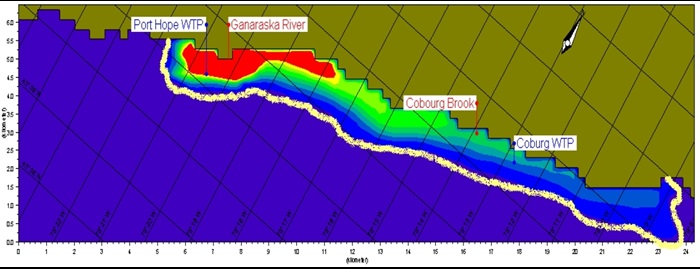Hydrodynamic and water quality modelling helps to identify threats to drinking water intakes in Lake Ontario, Canada
The Great Lakes in Canada and the US are a crucial source of clean drinking water for the region including Ontario’s 13 million residents. As part of Ontario’s Source Water Protection program, a group called the "Lake Ontario Collaborative" was formed to study the potential threats to this source of drinking water for Lake Ontario, the easternmost of the Great Lakes.
The study centred on potential contamination stemming from land-based activities - such as spills from surrounding waste water treatment plants, nuclear power plants, petroleum pipelines and industrial facilities - and their impact on water quality at drinking water intakes. Potential spill scenarios were modelled using DHI’s MIKE 3 software to evaluate if these activities could deteriorate water quality around intakes to a significant degree (i.e. make the water unsuitable for drinking). The study included an extensive calibration effort to validate the model to existing conditions such that it could be used for predictive purposes.
Based on the modelling results, the Lake Ontario Collaborative delineated intake protection zones for a number of scenarios. The zones serve to guide the preparation of emergency response planning as well as raise awareness of the danger of potential spills.

Spill scenario simulation the accidental release of benzene from Lake Ontario’s northern shore. The yellow line depicts the boundary of the impacted zone. Calculation of the three-dimensional hydrodynamics (e.g. water level, current speed and direction) as well as different water quality aspects (e.g. dissolved nutrients, bacterial densities, radiological activity) allowed for accurate simulations and predictions of water currents in the lake, including the complicated seasonal dynamics, and simulation of potential spill damage.